The Definitive Sennheiser E845 review
A budget priced dynamic supercardioid microphone for both home studio and live stage use
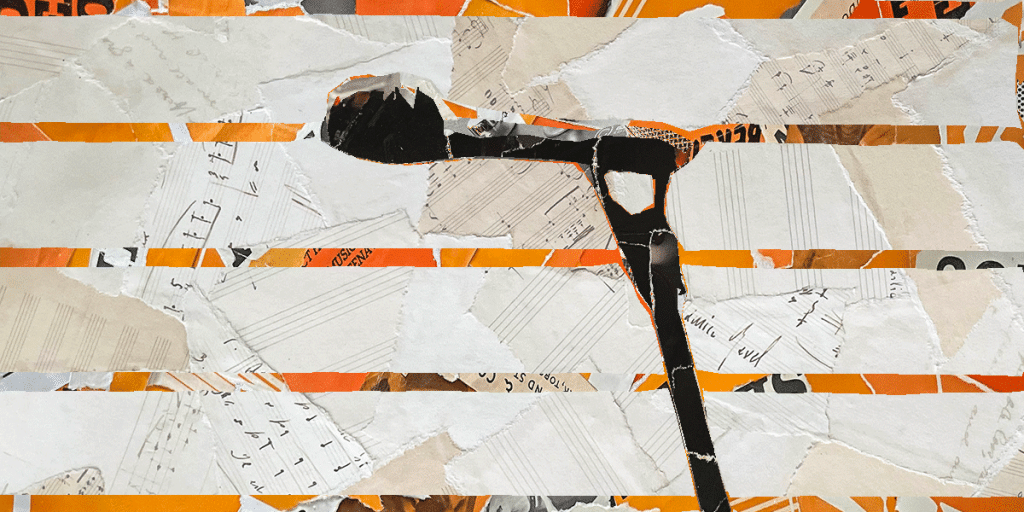
Reviewed by: Paul Narang
Review date: August 2022
Price: Under $100
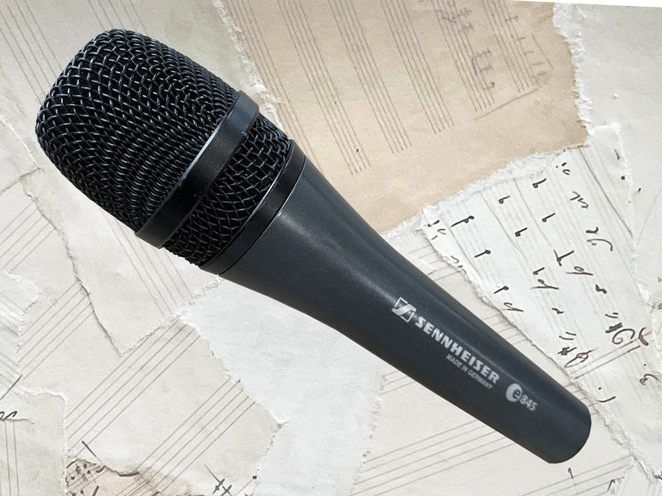

Sennheiser E845 Review
| Pros: | Cons: |
| Good value Clear sound cuts through the mix Rugged construction | Not as warm as the SM58 |
Sennheiser E845 Review
A full range dynamic vocal mic with a tight supercardioid pickup pattern. This simple microphone has a warmth and clarity ideal for live vocals. It minimises and rejects sound from the sides of the mic and keeps feedback to a minimum.
What is it?
Sennheiser are one of the most well known microphone manufacturers, with a professional user base across broadcast, live music and recording studios.
They bought out their budget Evolution range in 1998 to make their microphones available to home recording studios and gigging musicians.
Evolution range evolved into today’s entry level 600 and 800 series, as well as the more expensive 900 series. While the 600 series is primarily for instruments, the 800 range are all dedicated vocal microphones.
They include the E845 dynamic mic reviewed here, the wide cardioid E835, and the condenser E865 microphone. Each of these 3 models are also available with on/off switches (E835 S, E845 S and E 865 S).
The E 845 is a metal bodied dynamic vocal mic with a supercardioid polar pattern. It’s designed to be hand held, with minimal handling interference. So how does it perform in our Sennheiser E845 review?
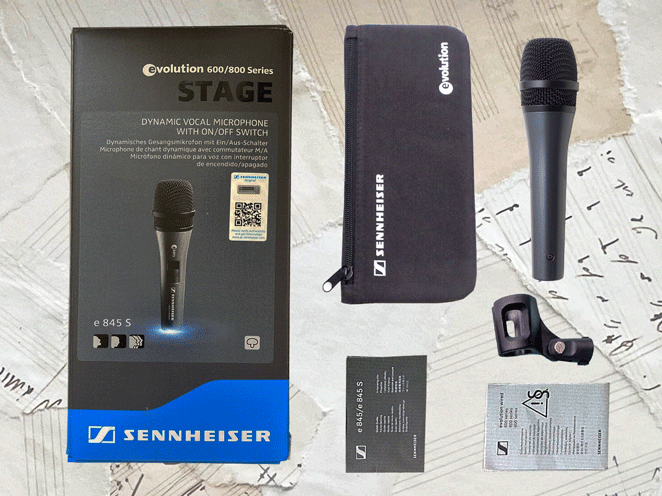
In the box
The Sennheiser E845 mic arrived in a smart blue, grey and white cardboard box which also included:
- microphone clamp
- Zip up microphone pouch
- User manual
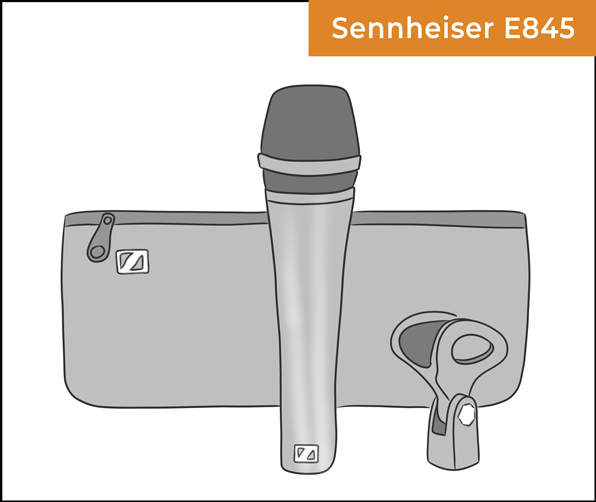
Dynamic vs condenser microphone
The Sennheiser E 845 (and E 845 S) is a ‘dynamic’ microphone. Dynamic microphones differ to ‘condenser’ microphones in the following ways:
- They’re less sensitive
- They’re less prone to feedback
- They’re more rugged and durable for live use
- They’re cheaper
- You can plug and play without power
E845 Polar pattern
The Sennheiser E 845 dynamic vocal mic uses a supercardioid pickup pattern, which is a little more restricted than the more common heart-shaped, cardioid polar pattern. It picks up a band of sound from the front, as well as a narrower band from the back. Sound is rejected from the back and sides. This makes it ideal for use on stage, where you can really isolate the vocals from other noisy instruments, and minimise feedback.
It’s also great for the studio when you have 2 or more singers or instrumentalists recording at the same time.


A cardioid pattern is ideal for a home studio where the acoustics are less than ideal. It will pick up the sound of the vocalist in front of the mic, while rejecting the sounds of the room. This is emphasised even more with a supercardioid like the E845. And being a dynamic mic, it won’t pick up too many unwanted distant sounds, like traffic rumble or noisy neighbours.
A characteristic of the super-cardioid polar pattern to be aware of, is the small backward pointing lobe. This will pick up some sound from the back, so its important to be aware of what’s directly behind you.
E 845 vs E 845S
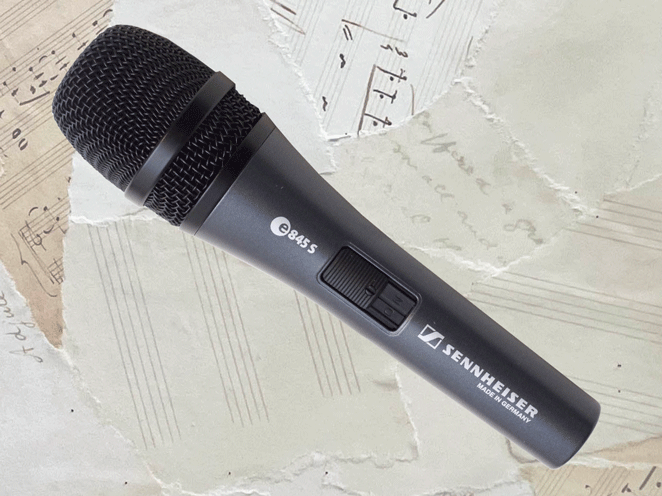
The Sennheiser E 845 microphone has no on/off switch, whereas the E 845S is the version with a switch. The switch has a tiny screw which can be used to lock it into position.
Connecting the Sennheiser E845
The E845 (and E845 S) uses an XLR cable to connect directly to an audio interface or mixer. XLR connectors are found on professional studio equipment. They’re ‘balanced’, which means the cables are shielded from interference and carry a higher signal than unbalanced cables.
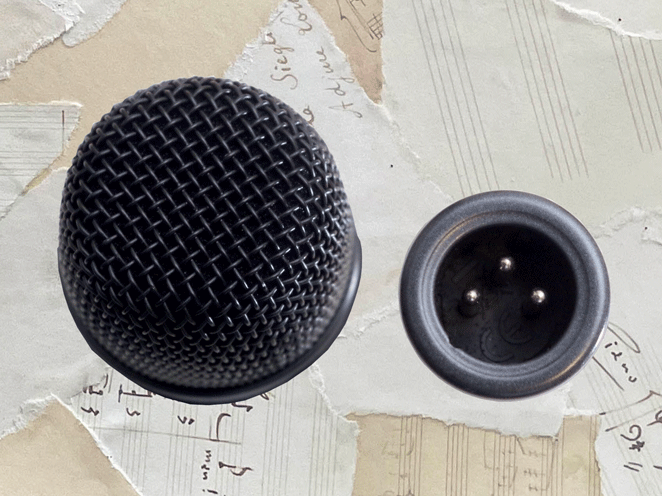
If your audio interface or mixer has 1/4″ jack inputs, you’ll need a cable with an XLR connector on one end, and a 1/4″ jack on the other, like this. Keeping cable lengths to a minimum is good practice to maintain the best signal.
The Sennheiser E845 Design and build
The Sennheiser E 845 dynamic vocal mic is a simple, sturdy mic which doesn’t have a lot of features or moving parts to go wrong. The only moving part is the on/off switch on the E 845 S model. This makes it particularly suitable for live use.
Like the other vocal mics in the Evolution range, the E 845 has an attractive, slender microphone design. It’s small and lightweight at 330g (0.73 lb), and with a diameter of 46 mm (1.8″), fits neatly in the hand. The length is 185 mm (7.3″), which is slightly longer than the E835, and 2.5 cm taller than the Shure SM58.
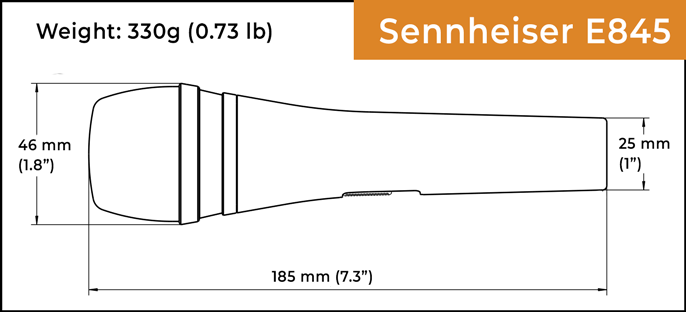
Reassuringly solid, the main dark grey body is made of metal, and there’s a strong black metal grille protecting the top. The grille can be unscrewed, so that the foam insert can be removed for cleaning or replacing.
Inside the mic is a humbucking coil, which effectively cancels electromagnetic hum, ensuring a clean signal. And an elastic capsule suspension isolates handling noise, so you can hold the mic with the confidence that it won’t interfere with the sound.
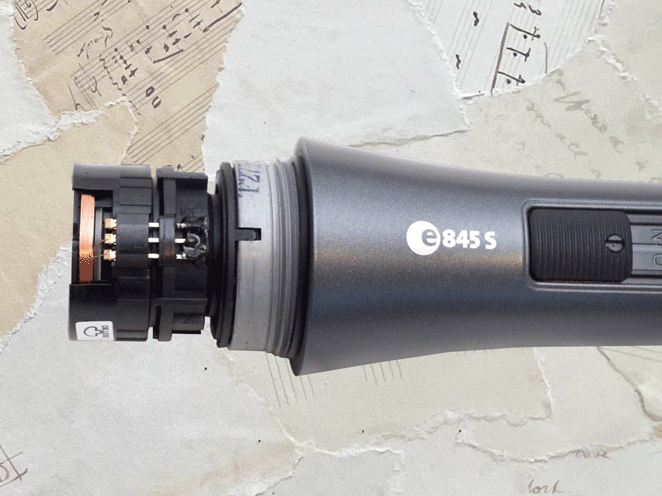
The E845 has a strong neodymium ferrous magnet which ensures microphone stability in temperatures between 0° and 40° Centigrade.
The Sennheiser E845 S has the inclusion of an on/off switch, and a little screw which can be turned to make sure you don’t accidentally switch the mic off during a performance.
It’s a strong robust design, with little to go wrong. Both the E845 and E845 S dynamic vocal mics come with an industry leading 10 year warranty.
Sennheiser E845 Frequency range
The E 845 dynamic vocal mic has a stated frequency range of 40 Hz to 16 kHz. This is a wide range, suitable for male and female vocals or speech.
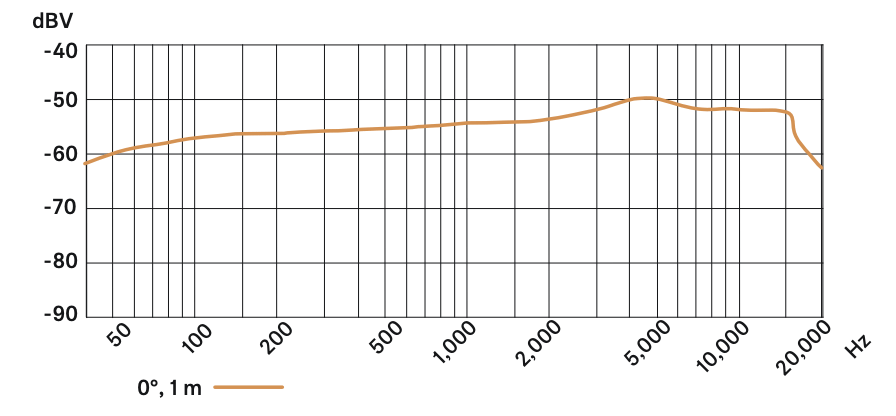
The frequency chart shows the E845 mic to be reasonably flat, with a peak around 5 kHz, and a steep decline just above 15 kHz. Compared with the E845 frequency chart, it’s a bit smoother, and has an extended high frequency range.
E845 Sensitivity and impedance
As a dynamic mic, the Sennheiser E 845 is less sensitive when compared to a condenser mic. Low sensitivity is great for isolating the sound being picked up, as well as making it ideal for loud sound sources. This mic has the ability to handle a very loud 150dB SPL.
And like most professional microphones, it has a low output impedance, stated as having a nominal impedance of 350 ohms. This makes it a good performer across long cable runs, and less susceptible to external interference.

E845 Sound quality
The Sennheiser E 845 dynamic vocal mic is a really clean sounding mic which can be used in the studio as well as for the stage.
When comparing with the E835, the extended high frequency range is immediately apparent. It has a full bright sound without becoming brittle or harsh. I’d describe the sound as smooth and clear, with a tight refined bass. When competing with a full band, this is just the sound a vocalist needs to cut through the mix.
There’s less bass when comparing to the E865 (condenser microphone). But this isn’t necessarily a bad thing. The gentle bass cut results in a refined and balanced sound. I found it to suit deep male voices, effectively removing any frequencies which would have caused a muddying effect. It also sounded great on female vocals, capturing all the high end clarity without imparting too much detail.
The E 845 is well suited to both speech and vocals, affording them a nice clarity and intelligibility. It has a natural sound, which doesn’t get boomy when in close proximity.
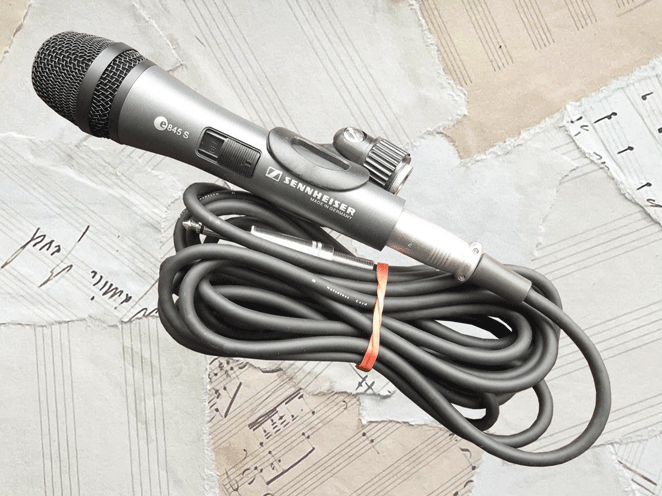
Sennheiser E845 in Performance
The E845 dynamic vocal microphone really excels on stage. The noise handling and anti-interference features common to the whole Evolution range make it eminently suitable for live use
The supercardioid polar pattern keeps feedback at bay, even at decent volume levels. But remember that the drawback of this polar pattern is having to make sure you stay on-axis.
It’s a good mic to have on general standby in the studio too, and will perform well on instruments as well as vocals. If your studio room is acoustically treated, you might prefer to use a standard cardioid mic, as this will give the vocalist more leeway to move around the mic without effecting the sound.
Sennheiser E845 vs Shure Beta 58A
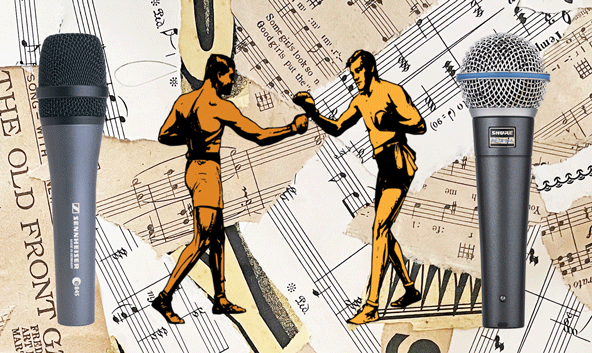
The Sennheiser E 845 microphone is often compared to the Shure Beta 58 A. The Beta 58A is also a popular vocal mic, derived from the well known SM58. It differs from the original Shure SM58 in that it is a supercardioid mic (as apposed to the cardioid), just like the E845.
The E845 and the Shure Beta 58A have many similarities. Both the Beta 58 and E845 are metal bodied, handheld dynamic supercardioid vocal mics, with a similar frequency range. They both excel in live vocal performance, each with an internal shock mount and with excellent feedback rejection. And they’re both available at a similar budget price.
The E 845 uses a humbucker coil, whereas the Beta 58A has a single coil. They’re both clear and bright sounding mics with the ability to cut through a busy mix.
One big difference between the two mics becomes apparent when the vocalist sings close to the mic. The Shure Beta 58A responds to the proximity effect, raising the bass significantly, whereas the Sennheiser E 845 does not. Neither one is better, it depends on your vocal technique, and the sound you’re looking to achieve.
Perhaps something to also consider is that the Sennheiser E 845 dynamic vocal mic comes with a 10 year manufacturer’s warranty, whereas the Shure Beta 58 A only has 2 years.
Holding the E845
Where you hold the microphone in relation to your mouth can make a big difference in sound. Professional vocalists are always repositioning their mics to change the tone and add expression to their performance.
Always hold the vocal mic by the main body, and if there’s too much sibilance, try holding it slightly to the side.
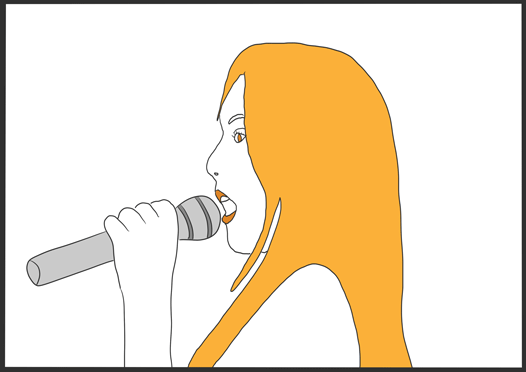
When you have other instruments in close proximity and you just want the sound of the voice, it’s best to sing or speak directly into the mic. This will add more bass to the sound, due to the ‘proximity effect’. It’s an effect used by radio presenters to give them very deep voices.
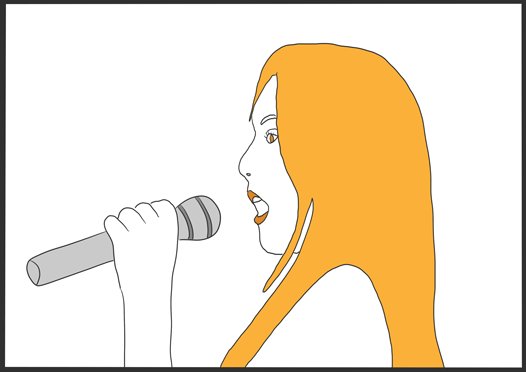
For a more natural, balanced sound, hold the mic between 5 and 10 cm away from your mouth. There’ll be less of the proximity effect, and the mic will pick up more sounds from other instruments, and the acoustics of the room.
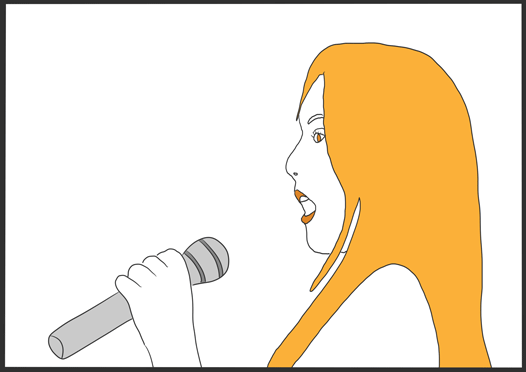
To bring in more of the room sound, and the instruments around you, hold the mic 10 cm or more away from your mouth. This is also a good position for any sudden loud notes, or to shape, and tail off a long note.
Sennheiser E845 vs E835
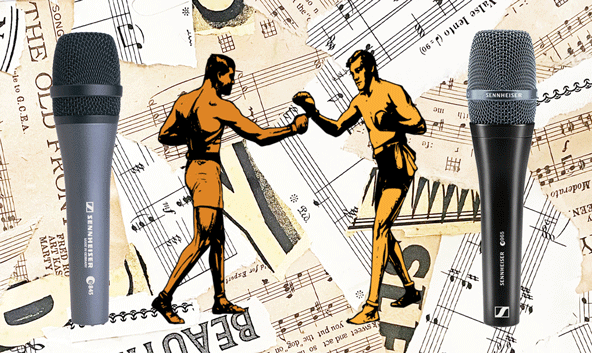
Also in Sennheiser’s Evolution range is the Sennheiser E835 dynamic vocal mic, which has very similar sonic characteristics. The main difference is that the E835 has a cardioid pattern, whereas the E845 has a supercardioid pattern. The E845 also has an extended high frequency range and a reasonably flat frequency response, compared to the presence peak in the E835.
So if you’re struggling with feedback issues, or you’re picking up too much sound from the sides of you mic, the E 845 vocal mic will give you a distinct advantage. The disadvantage is that you can’t move too far from the front of the microphone without affecting the sound quality.
What else do you need?
With any vocal microphone, you’ll need:
- Microphone stand
Mic stands reduce any handling noise in the studio. Try a good quality boom stand, with a tripod base like the K&M 210/2
- XLR cable
If you want the best quality XLR cables, try these. Go for the shorter lengths where possible.
- Pop shield
This is to stop little bursts of air causing bassy pops on your studio recordings. You can easily make one of these out of stockings, or buy one here.
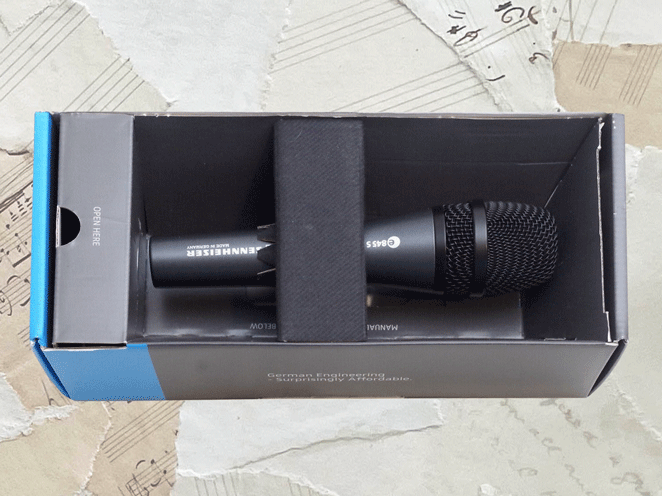
Conclusion
The Sennheiser E845 dynamic vocal mic is a well engineered, solid microphone, especially suitable for live use. It’s supercardioid capsule ensures off-axis rejection, keeping feedback and spill to a minimum.
It’s also a good general microphone to have on standby in the recording studio. With just a small area in front of the mic picking up sound, it will minimise the sound of the room. Its ability to handle high sound pressure levels, also makes it great with loud instruments, such as drums and brass.
It has a warm, balanced and refined sound, cutting through the busiest of mixes with little or no equalisation.
Frequently Asked Questions
Is the Sennheiser E845 a vocal mic?
Yes, the E845 is primarily used for live vocals, but it’s also a good general microphone to have in the recording studio for vocals and instruments.
What pick up pattern is the E845?
The Sennheiser E845 has a super-cardioid polar pattern, making it ideal for noise rejection to the sides of the mic.
How do I clean an E845 microphone?
Use a 70% alcohol solution sprayed onto a soft cloth to wipe down the body. To clean the head grille, twist it off, remove any foam and use a brush with 70% alcohol solution. Use warm water to clean the foam.
